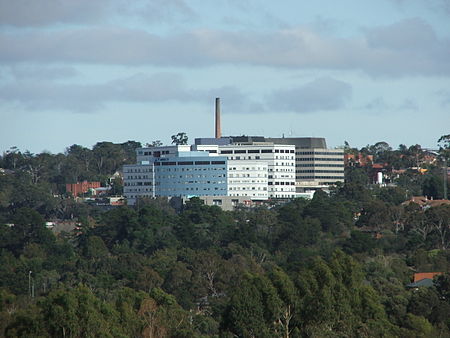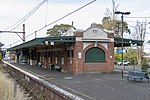Austin Hospital
1882 establishments in AustraliaBuildings and structures in the City of BanyuleHeidelberg, VictoriaHospitals established in 1882Hospitals in Melbourne ... and 1 more
Teaching hospitals in Australia

The Austin Hospital is a public teaching hospital in Melbourne's north-eastern suburb of Heidelberg, and is administered by Austin Health, along with the Heidelberg Repatriation Hospital and the Royal Talbot Rehabilitation Centre.
Excerpt from the Wikipedia article Austin Hospital (License: CC BY-SA 3.0, Authors, Images).Austin Hospital
Studley Road, Melbourne Heidelberg
Geographical coordinates (GPS) Address Website External links Nearby Places Show on map
Geographical coordinates (GPS)
| Latitude | Longitude |
|---|---|
| N -37.7564 ° | E 145.0584 ° |
Address
Austin Hospital
Studley Road 145
3084 Melbourne, Heidelberg
Victoria, Australia
Open on Google Maps




